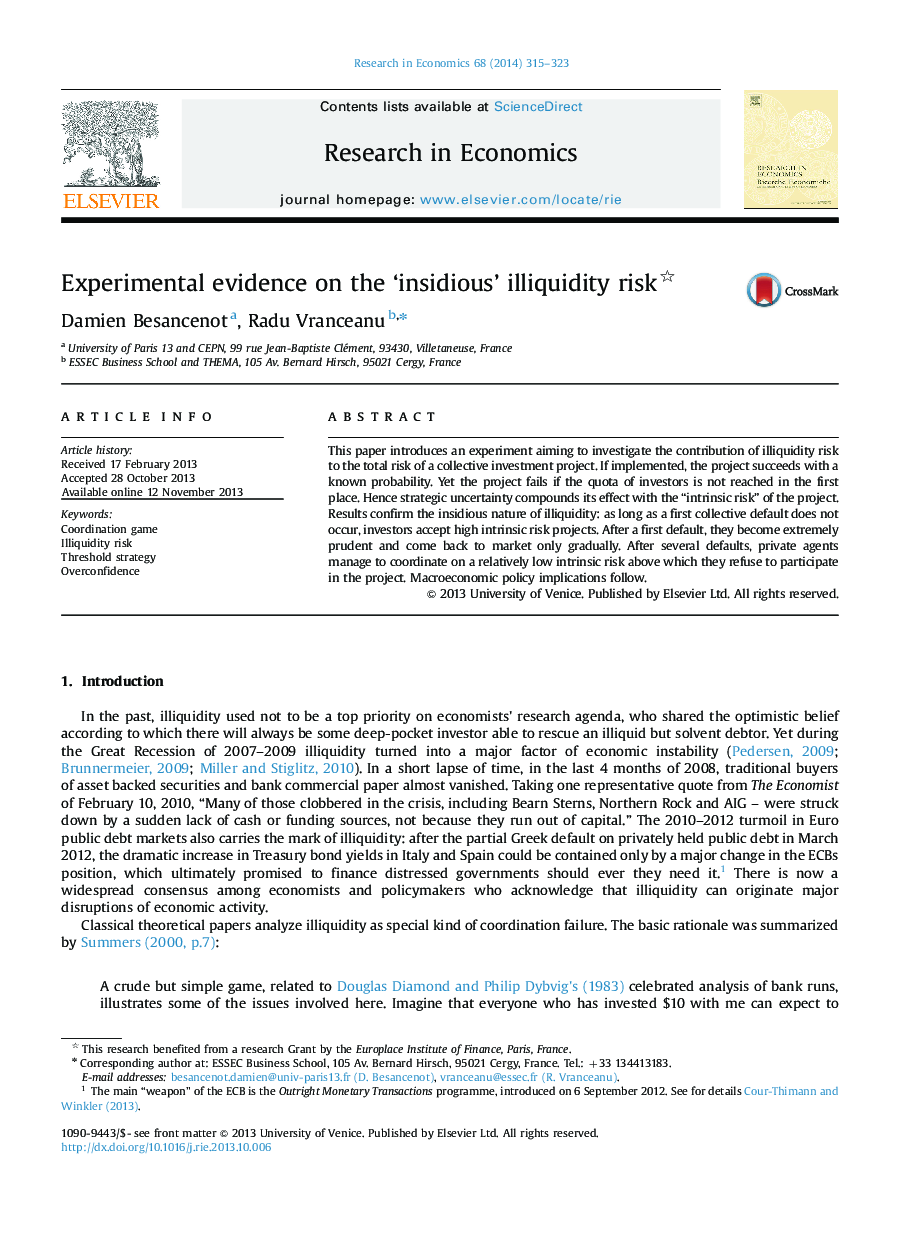| Article ID | Journal | Published Year | Pages | File Type |
|---|---|---|---|---|
| 983377 | Research in Economics | 2014 | 9 Pages |
•In the experiment, illiquidity default arises when the number of investors in a risky project falls below a critical threshold.•Before a first illiquidity default occurs, investors tend to underestimate the coordination risk.•After the first illiquidity default investors become “over-cautious” and do not participate even for a relatively small intrinsic risk.•After several illiquidity defaults, investors manage to coordinate their investment decision around an intrinsic risk threshold.•In this “steady” situation, strategic uncertainty is still at work and contributes to the overall risk of the project.
This paper introduces an experiment aiming to investigate the contribution of illiquidity risk to the total risk of a collective investment project. If implemented, the project succeeds with a known probability. Yet the project fails if the quota of investors is not reached in the first place. Hence strategic uncertainty compounds its effect with the “intrinsic risk” of the project. Results confirm the insidious nature of illiquidity: as long as a first collective default does not occur, investors accept high intrinsic risk projects. After a first default, they become extremely prudent and come back to market only gradually. After several defaults, private agents manage to coordinate on a relatively low intrinsic risk above which they refuse to participate in the project. Macroeconomic policy implications follow.
